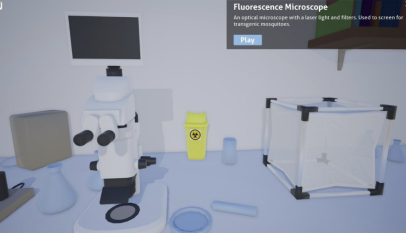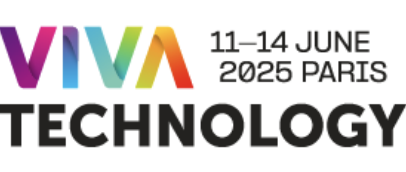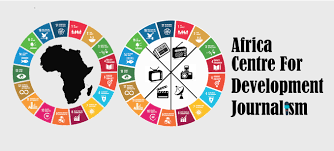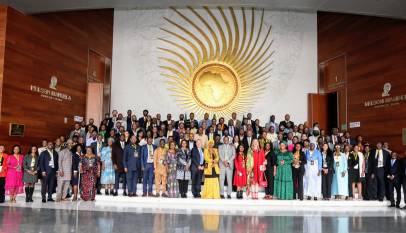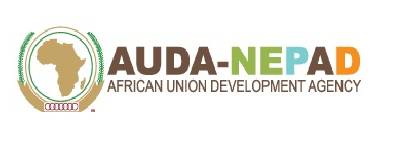Bridging the gender gap in Science, Technology, and Engineering

Globally, there is a huge gap in respect of the percentage of women and girls studying Science, Technology, Engineering, and Mathematics (STEM) courses and pursuing carriers in the same fields. The gap is even wider in the developing countries of Africa, Asia and South America
Twenty year old Firdausi Hussaini is visibly excited, having just received a cash support for her university education courtesy of the NGO, Inclusive Community Education and Development Association (ICEADA’s) scholarship program for girls studying Science, Technology, Engineering, and Mathematics (STEM) at secondary and tertiary levels of education.
A first year student at the department of science and technical education (majoring in mathematics and biology) at Bayero University, Kano, in northwestern Nigeria, Firdausi has been awarded the scholarship not only because of her financially disadvantaged background but also for her outstanding academic performance.
“I am happy to be recognized for my efforts and the scholarship will encourage me to do more academically, and I have been inspired by the caliber of women I saw here today some of whom are engineers, scientists, and professors,” says Firdausi who with a CGPA of 4.67 is at the top of her class, during the award ceremony where she received the scholarship.
Globally, there is a huge gap in relation to the percentage of women and girls studying Science, Technology, Engineering, and Mathematics (STEM) courses and pursuing carriers in the same fields. This is not unconnected with various types of societal stereotypes and perceptions that tend to view STEM courses and carriers as being the exclusive preserve of the male gender.
Whereas the phenomenon of gender disparity existing in the fields of Science, Technology and Engineering is a global challenge and wide even in the developed countries of Europe and North America, the gap is much wider in the developing world countries of Africa, Asia and South America.
In northern Nigeria, there is not only a very huge gap regarding women and girls’ participation in the fields of Science, Technology, Engineering and Mathematics (STEM) but the region also has one of the highest figures of out of schools girls in Sub Saharan Africa.
Thus, the Inclusive Community Education and Development Association (ICEADA)’s joint scholarship and mentoring program with Peace Corp Nigeria Alumni Foundation (PCNAF) for girls in STEM is aimed at bridging the wide disparity in relation to the percentage of girls studying STEM subjects at the level of secondary education and pursuing STEM courses at the level of tertiary education in Nigeria’s northern states of Kano, Katsina, Niger, Nassarawa, Gombe and Bauchi.
At tertiary level, the female undergraduate scholarship program aims to ease the financial burden of students with outstanding academic and leadership potentials but face difficulties in coping with the financial needs of their programmes of study. Therefore, the programme targets undergraduate students pursuing any of the Science, Technology, Engineering and Mathematics (STEM) degree courses.
On the other hand, the PCNAF/ICEADA scholarship programme for girls in secondary school targets brilliant but financially disadvantaged girls who are enrolled in the final level of junior secondary school (grade 9), and the scholarship covers tuition, books, uniforms and transport.
“There are a lot of barriers preventing girls from studying science, technology and engineering courses; part of it is the society’s view or stereotyping of certain subjects, courses and carriers as being the exclusive preserve of boys,” says Muhammad Bello Shitu, a professor of community development and innovation diffusion at the Bayero University, Kano and chairman of ICEADA.
“Through the scholarship program, we are trying to encourage disadvantaged girls in secondary schools and tertiary institutions to study and pursue carriers in Science, Technology, Engineering, and Mathematics (STEM). The program is focused on girls who are academically sound but need financial support. We are also trying to raise awareness among individual community members and professional groups to begin to encourage girls to study and pursue carriers in STEM.”
Shitu, who estimated the global ratio of girls/women studying and pursuing carriers in STEM to men to be around 20:80 said the gender disparity was even wider in northern Nigeria due to “a lot of issues around delivery mechanism, home condition, community and environmental influences which combine to create a lot of barriers for girls to study and pursue carriers in science, technology and engineering.”
Rabi’a Sa’id, an associate professor in the department of physics at Bayero University is the mentor of the girls under the PCNAF-ICEADA STEM scholarship program. She said although women constitute not less than of half of the world’s population they rarely get the opportunity to make inputs to scientific and technological innovations.
“Statistics has shown that half of the world’s population is female yet they don’t make inputs to technological innovations that are even specifically meant for their consumption, which leads to innovations that seek to address women’s challenges but fail to do so effectively because they were designed by men,” says Sa’id.
“Women must get involved in STEM to be able to contribute to policies and decisions on issues that affect them. It is women that know the needs of their fellow womenfolk therefore women should get involved in the design of technological innovations that are primarily meant for women including in the field of health sciences and medical innovations.”
Hauwa Sadique is the president of the Association of Professional Women Engineers of Nigeria (APWEN), who as a trained mechanical engineer was the only female student in her class in the university and thus faced many obstacles – including being asked, by her male lecturer, if she missed her way when she entered her class for the first time at the University of Maiduguri in the early 1990s.
“[As women] we face a lot of challenges due to our society’s perception of women and what carriers we should go into. But if you really want to achieve something in life you need to be bold enough to challenge yourself and God willing you will make it,” says Sadique.
Through this mentorship and scholarship program, it is expected that there would be an increase in the number of girls in the targeted communities that would like to pursue undergraduate courses and carriers in Science, Technology, Engineering and Mathematics.
The overarching goal for the mentorship and scholarship program therefore, is increasing public awareness about the benefits of girls completing secondary school, in line with the UN’s Sustainable Development Goals which are, among others, seeking for inclusive and equitable quality education as well as promoting lifelong learning opportunities.





